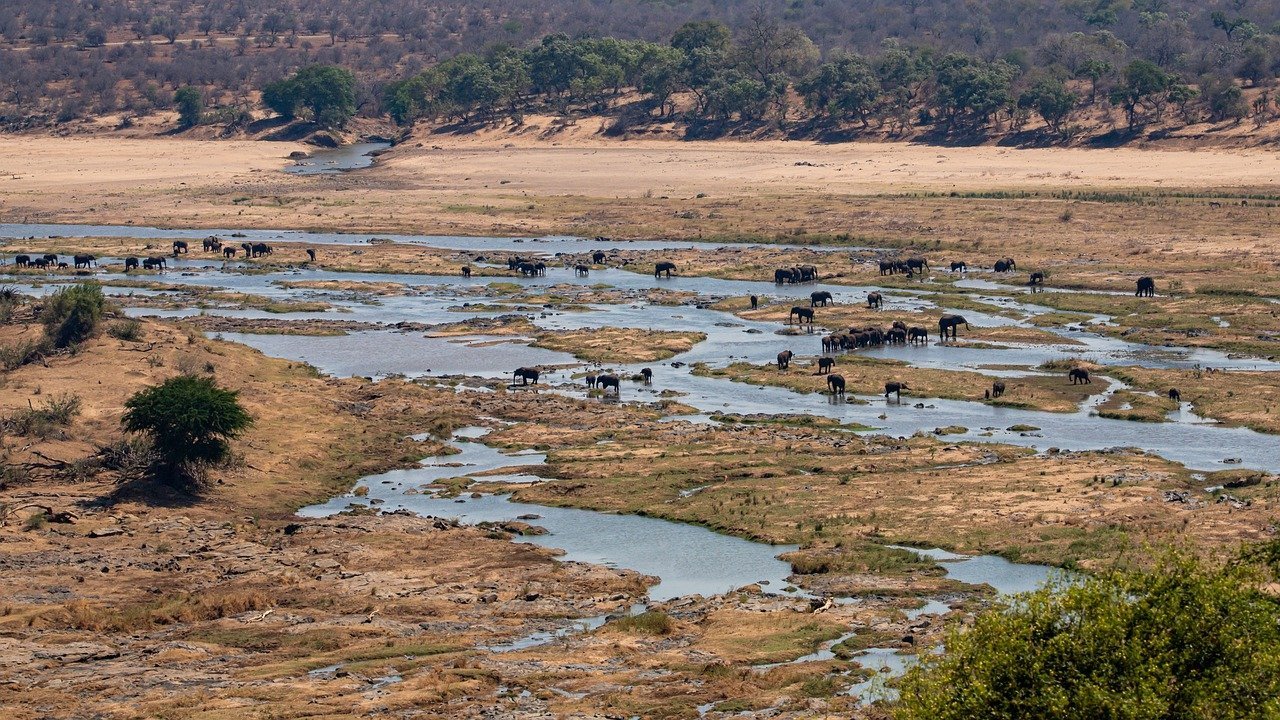Still looking for other options for the best South Africa Safari? Kruger National Park, situated in South Africa, stands as one of the continent’s most prestigious wildlife sanctuaries. Spanning a vast area of approximately 7,523 square miles (19,485 square kilometers), this iconic park is celebrated for its exceptional natural beauty, rich biodiversity, and remarkable wildlife experiences.
Diverse Ecosystems: Kruger National Park boasts a remarkable variety of ecosystems, ranging from grassy plains and woodlands to rugged mountains and riverine forests. This diversity of habitats creates a unique environment that supports an astonishing array of plant and animal species.
Abundant Wildlife: The park is renowned for its thriving wildlife populations, making it a prime destination for safari enthusiasts. Visitors have the opportunity to encounter the famous Big Five (lion, elephant, buffalo, rhinoceros, and leopard) along with numerous other species like giraffes, zebras, hippos, and cheetahs.
Birdwatcher’s Paradise: Birdwatchers are in for a treat as Kruger National Park is home to over 500 bird species. The park’s diverse ecosystems provide an ideal habitat for both resident and migratory birds, making it a paradise for bird enthusiasts.

Conservation Efforts: The park plays a vital role in conservation efforts, aiming to protect and preserve the precious wildlife and ecosystems within its boundaries. Conservation initiatives ensure that future generations can continue to appreciate the natural wonders of Kruger National Park.
Visitor Experience: Kruger offers a range of accommodations, from luxurious lodges to more budget-friendly options, ensuring that visitors can enjoy a comfortable stay while immersing themselves in the African wilderness.
If you want to discover other amazing safaris in Africa please read: Our Ultimate Guide to the Best Safari in Africa
South Africa Safari: Geography and Location

Kruger National Park is strategically located in the northeastern region of South Africa, making it a vital part of the country’s conservation efforts. It shares its borders with Zimbabwe to the north and Mozambique to the east, enhancing its position as a critical wildlife corridor.
Bordering Zimbabwe and Mozambique: The park’s northern and eastern boundaries are shared with two neighboring countries, Zimbabwe and Mozambique. This geographical proximity contributes to the park’s role in regional biodiversity conservation and allows for the movement of wildlife across borders.
Limpopo and Mpumalanga Provinces: Kruger National Park spans across two South African provinces: Limpopo and Mpumalanga. This dual provincial presence underscores the park’s vastness and ecological diversity. The park’s expansive territory within these provinces ensures a wide range of ecosystems and wildlife habitats.
Transfrontier Conservation Area: Kruger National Park’s location is strategically significant in the context of transfrontier conservation. It is part of the Greater Limpopo Transfrontier Conservation Area, a collaborative initiative between South Africa, Zimbabwe, and Mozambique. This extensive conservation area facilitates the free movement of wildlife, preserving natural migration patterns and enhancing genetic diversity.
The Park is Known For

Kruger National Park is renowned for several distinctive features that make it a world-famous destination:
Rich Wildlife: Kruger National Park is celebrated for its extraordinary biodiversity. It is home to the iconic “Big Five” animals—lion, leopard, elephant, rhinoceros, and buffalo. These charismatic megafauna are among the main attractions, drawing wildlife enthusiasts and photographers from around the globe. Visitors have the opportunity to witness these majestic creatures in their natural habitat, creating unforgettable wildlife encounters.
Birdwatching Paradise: The park’s avian diversity is a birdwatcher’s dream come true. With over 500 bird species, Kruger National Park offers unparalleled birdwatching opportunities. The diverse ecosystems, including savannahs, woodlands, wetlands, and riverbanks, provide habitats for a wide range of bird species. Bird enthusiasts can spot everything from vibrant sunbirds to powerful raptors while exploring the park’s landscapes.
Diverse Ecosystems: Kruger National Park’s diverse ecosystems are a testament to its ecological richness. The park encompasses a variety of landscapes, from expansive savannahs to lush woodlands, meandering rivers, and towering mountains. This diversity of habitats supports not only the Big Five but also countless other species of mammals, reptiles, and plants. Exploring the park offers a glimpse into the complex interplay of life within these distinct ecosystems.
If you are interested in sustainability please read: Global Sustainable Tourism: A Comprehensive Guide to Eco-Friendly Travel
South Africa Safari: Best Time to Visit
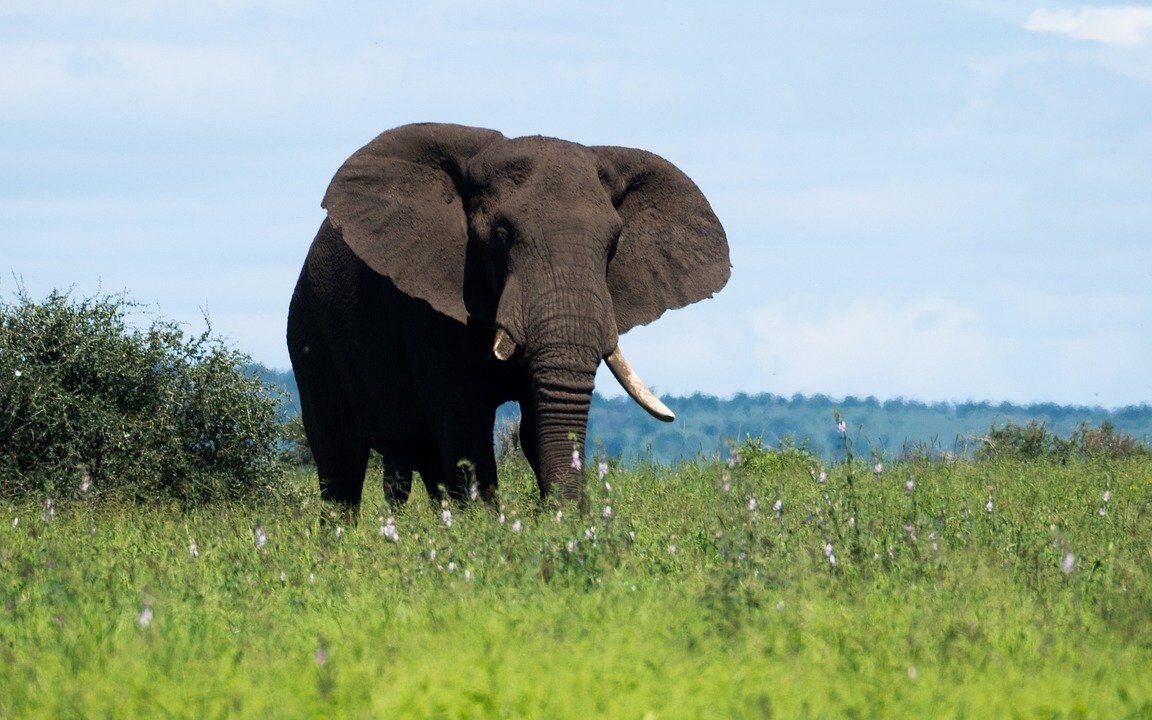
Kruger National Park offers a captivating experience year-round. However, the ideal time to plan your visit is during the dry season, which occurs from May to September.
Dry Season (May to September):
- Wildlife Concentration: This period is considered prime for wildlife viewing. With the onset of the dry season, vegetation thins out, and water sources become scarce. As a result, animals congregate around rivers, waterholes, and dams, making them easier to spot. You have a higher chance of witnessing the iconic Big Five during this time.
- Comfortable Temperatures: The dry season brings cooler temperatures, especially during the winter months (June to August). Mild daytime temperatures and crisp mornings make for a comfortable and enjoyable safari experience. You won’t have to contend with the sweltering heat of the summer months.
Shoulder Seasons (April & October):
- Transitional Periods: The months of April and October mark the transition between the wet and dry seasons. These shoulder seasons offer a unique blend of experiences. In April, you may still witness lush green landscapes, while October begins to see the first signs of the dry season. Wildlife can still be abundant, and temperatures are moderate.
Wet Season (November to March):
- Lush Greenery: The wet season is characterized by lush green vegetation and dramatic thunderstorms. While the park is transformed into a green paradise, wildlife tends to disperse as water becomes more readily available in the natural environment. Birdwatchers will appreciate the influx of migratory birds during this time.
South Africa Safari: Top 10 Must-See

- Kruger’s Big Cats: Marvel at Kruger’s impressive population of big cats, including lions, leopards, and cheetahs. Observing these majestic predators in their natural habitat is a thrilling experience.
- Big Five: Embark on exhilarating game drives to seek out the iconic Big Five – lions, leopards, elephants, rhinoceros, and buffaloes. These magnificent creatures are the stars of the park and a true safari highlight.
- Birdlife: Kruger National Park is a paradise for birdwatchers. With over 500 bird species, including eagles, vultures, and colorful kingfishers, it offers incredible opportunities for birdwatching enthusiasts.
- Sunsets: Don’t miss the chance to witness breathtaking African sunsets over the park’s vast landscapes. The golden hues of the setting sun create a mesmerizing spectacle.
- Scenic Drives: Explore the park’s diverse ecosystems and landscapes on scenic drives. The well-maintained roads and trails allow you to traverse savannahs, woodlands, rivers, and mountains, all while encountering diverse wildlife.
- Cultural Experiences: Immerse yourself in the rich local cultures, including interactions with the Shangaan people. Learn about their traditions, folklore, and daily life, adding depth to your Kruger experience.
- Photography: Capture stunning moments of wildlife and landscapes with your camera. Kruger provides ample opportunities for wildlife photography, whether it’s a leopard resting in a tree or a herd of elephants at a waterhole.
- Night Drives: Experience the park’s nocturnal side on guided night drives. Spot elusive nocturnal creatures such as leopards, hyenas, and owls as they come to life under the moonlight.
- Bush Walks: Get up close to nature on guided bush walks. Expert rangers will lead you through the wilderness, offering insights into the park’s flora, fauna, and tracking skills, providing a unique perspective.
- Rest Camps: Stay in comfortable rest camps and lodges within the park. These accommodations offer a blend of comfort and immersion in the wild, allowing you to wake up to the sounds of the bush.
Hidden Gems in Kruger National Park
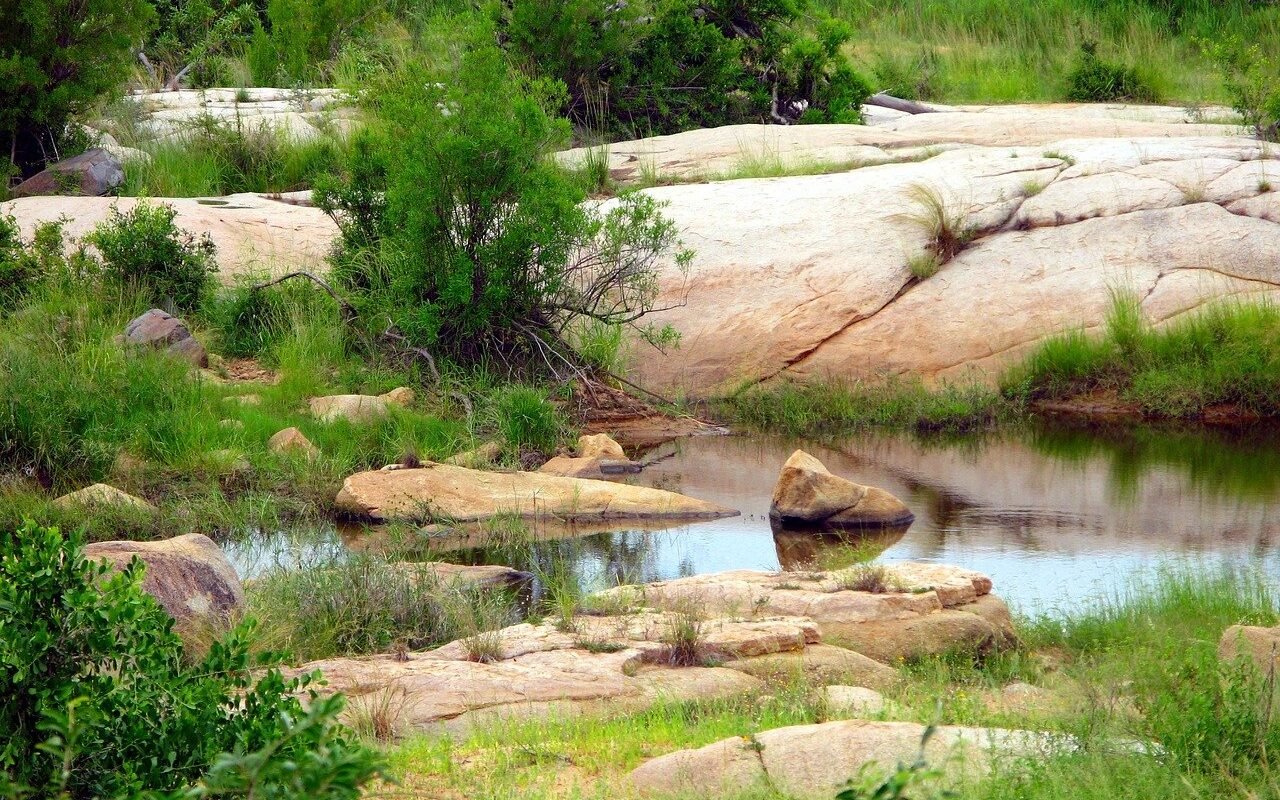
Exploring Kruger National Park is an adventure filled with remarkable discoveries. To make the most of your visit, consider these hidden gems:
Northern Pafuri: Located in the far northern reaches of Kruger National Park, Pafuri is a hidden paradise. This remote area is characterized by lush riverine forests along the Luvuvhu River, creating a striking contrast to the park’s more arid regions. It’s an excellent spot for birdwatching, with a wealth of avian species. Pafuri is also known for its ancient baobab trees and is a vital habitat for elephants, leopards, and nyala antelopes. Exploring this less-visited corner of Kruger offers a serene and immersive wildlife experience.
Remote Western Areas: The western side of Kruger National Park is less frequented by tourists, making it an ideal destination for those seeking solitude and unique wildlife sightings. The remote areas here are characterized by rugged terrain and diverse ecosystems. The Makuleke Contractual Park, for instance, is known for its pristine wilderness and rare species like the Pel’s fishing owl. Visitors can embark on guided walking safaris and discover the captivating stories of the park’s wildlife and landscapes.
South Africa Safari: Tours and Activities
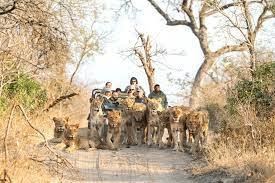

Game Drives: One of the most popular activities in Kruger is game drives. You can embark on guided safari drives in open vehicles, led by experienced rangers who will help you spot the Big Five (lion, leopard, elephant, rhino, buffalo) and a plethora of other wildlife. These drives often take place during the early morning or late afternoon when animals are most active.
Walking Safaris: For a more intimate and up-close experience with nature, consider a walking safari. Accompanied by armed guides, you’ll explore the park on foot, learning about tracks, signs, and the smaller creatures often missed during game drives. It’s a thrilling way to connect with the environment.
Birdwatching Tours: Kruger National Park is a birdwatcher’s paradise with over 500 bird species. Joining a birdwatching tour allows you to spot colorful and rare avian species. Bird enthusiasts will find delight in capturing these feathered wonders on camera.
Cultural Visits: Beyond the wildlife, Kruger also offers cultural experiences. Visit local villages and communities to learn about the Shangaan people’s traditions, dances, and way of life. These interactions provide valuable insights into the region’s heritage.
Photography Safaris: Photography enthusiasts can join specialized photography safaris led by professionals. Capture stunning shots of wildlife, landscapes, and sunsets. These tours offer photography tips and prime locations for that perfect shot.
Night Drives: Venture out after dark on a night drive to witness the park’s nocturnal creatures in action. Spot elusive animals like leopards, hyenas, and owls while enjoying the serenity of the nighttime wilderness.
These tours and activities in Kruger National Park cater to different interests, ensuring that every visitor can fully immerse themselves in the park’s incredible natural beauty and cultural heritage.
If you want to deep dive the topic please visit Travels Jinn Explore Experiences!
South Africa Safari: Luxury Accomodations
Here are some of the top luxury accommodations in Kruger National Park along with the requested information:
Lion Sands Ivory Lodge
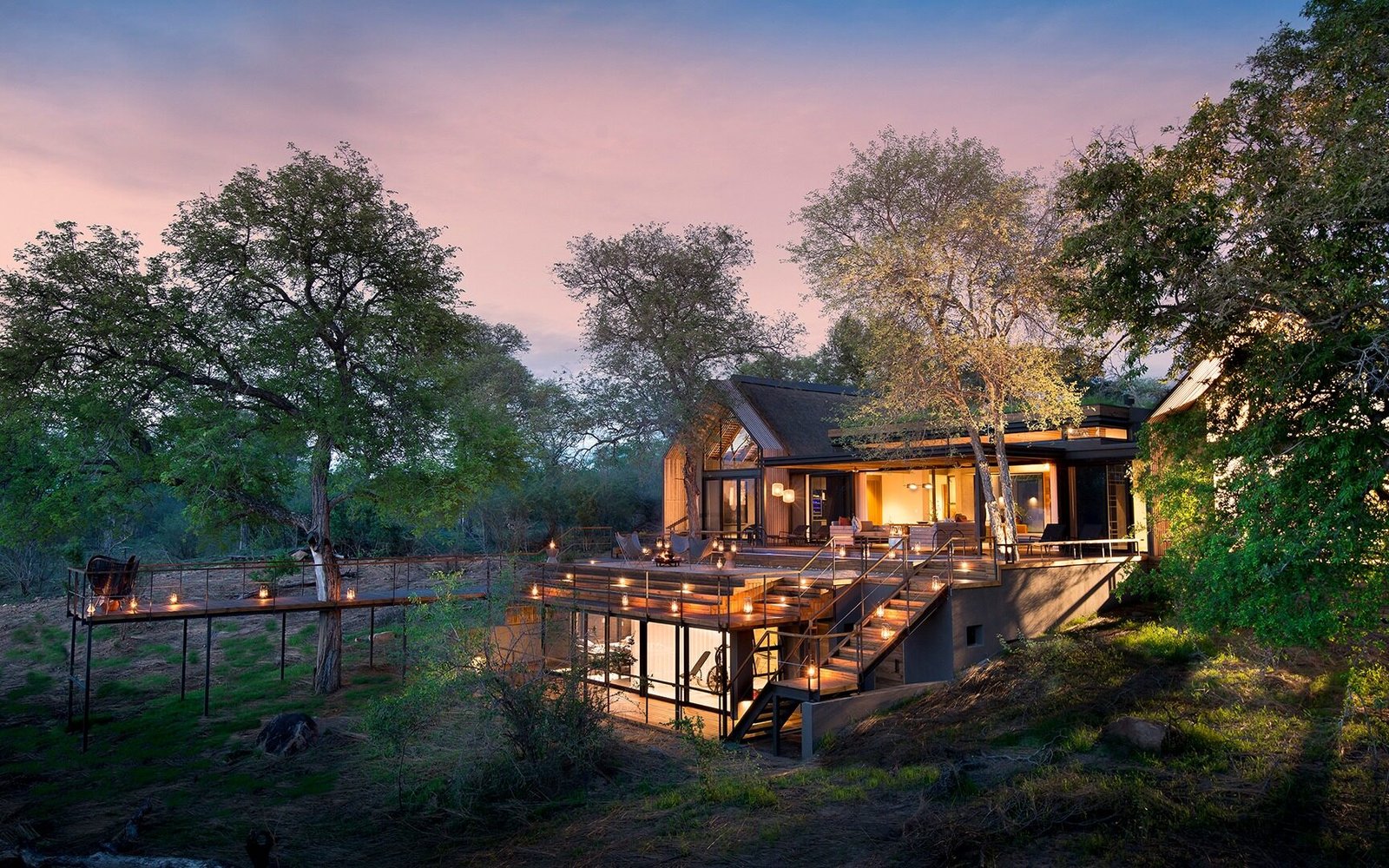
- Location: Lion Sands Game Reserve, Southern Kruger National Park
- Accommodations: Luxurious villas with private plunge pools and river views
- Dining Options: Fine dining with a focus on local flavors
- Unique Features: Exclusive access to the Sabie River, game drives, and guided walks
Singita Lebombo Lodge
- Location: Singita Private Game Reserve, Eastern Kruger National Park
- Accommodations: Modern and stylish suites with panoramic views
- Dining Options: Gourmet cuisine showcasing African ingredients
- Unique Features: Overlooking the N’wanetsi River, wildlife viewing, and spa facilities
Royal Malewane

- Location: Thornybush Private Game Reserve, Western Kruger National Park
- Accommodations: Elegant suites with private plunge pools
- Dining Options: Fine dining with a focus on South African cuisine
- Unique Features: Big Five game drives, a spa, and excellent birdwatching
Singita Boulders Lodge
- Location: Singita Private Game Reserve, Sabi Sand Game Reserve
- Accommodations: Spacious suites with a fusion of nature and luxury
- Dining Options: Exquisite meals with an extensive wine cellar
- Unique Features: Located along the Sand River, game drives, and star-bed sleepouts
Jock Safari Lodge
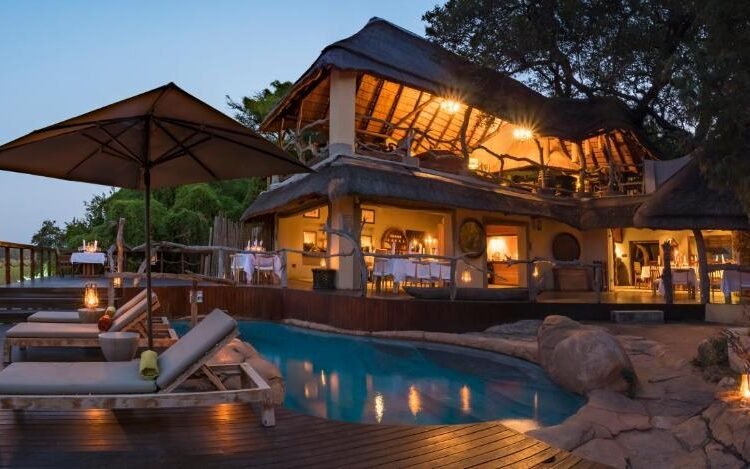
- Location: Jock Concession, Southern Kruger National Park
- Accommodations: Colonial-style suites and luxurious lodges
- Dining Options: Fine dining with a range of international dishes
- Unique Features: Situated near the confluence of the Mitomeni and Biyamiti rivers, wildlife viewing, and guided walks
These luxury lodges and retreats offer a combination of opulent accommodations, exceptional dining, and unique wildlife experiences in the heart of Kruger National Park.
For a broader list of Kenya Safari Accommodations please visit: Travels Jinn Accommodations.
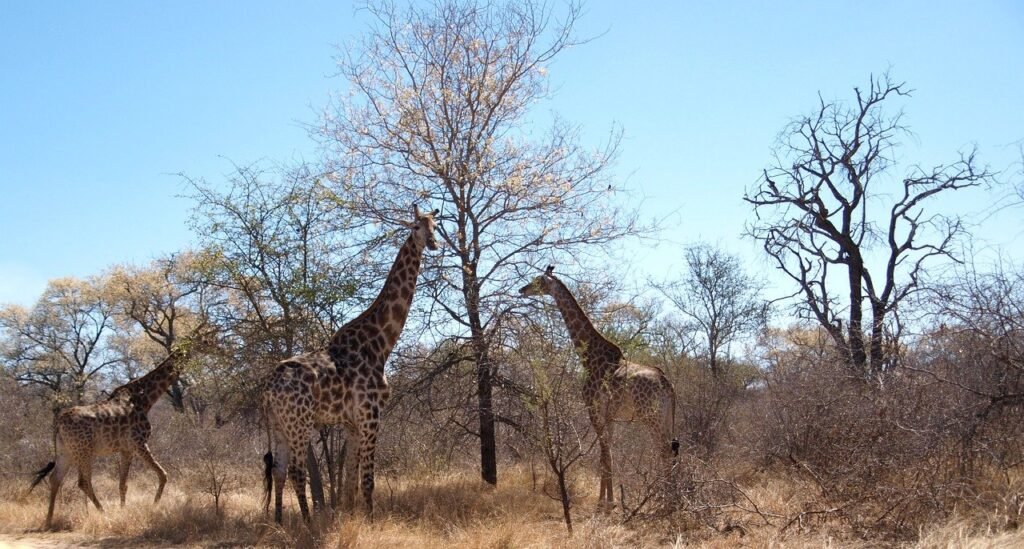
With a plethora of national parks and reserves, South Africa provides a diverse and unique range of experiences.
When considering a South Africa Safari, using Travel Jinn can enhance your experience significantly. Travel Jinn offers expertly curated safari packages, flights, accommodations (luxury and non), knowledgeable on-line guides, translations.
Use Travel Jinn for a perfect and hassle-free South Africa Safari Adventure!

